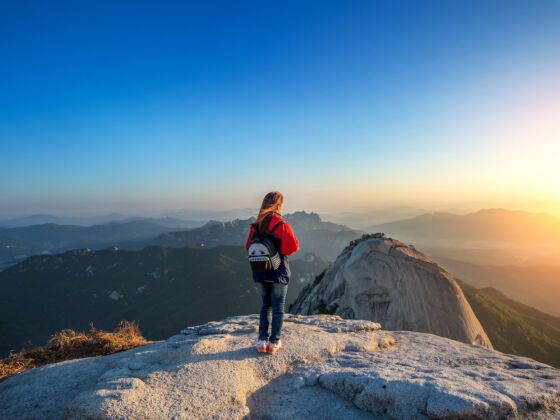Hiking
8 OUT OF 10 SOUTH KOREANS claim to be avid hikers. The government maintains the trails and facilities at most major trail heads and many peaks and popular multi-day treks have permanent shelters. The trails are accessible and used all year round, even in the snowy Korean winter. There is no excuse not to get on a mountain, and you will have plenty of good company.
